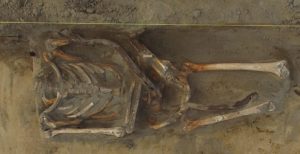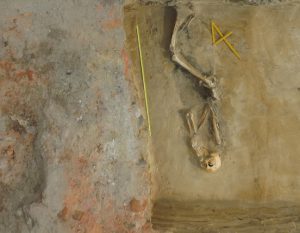Archaeologists excavating the area by the Józef Dziąga roundabout in Mińsk Mazowiecki, Poland, discovered a graveyard. The excavations were conducted in search for a wooden church that was burnt down during the Swedish invasion in the 17th century.

The local oral tradition placed the location of the wooden church near the area of the present roundabout. The wooden building is said to have been destroyed by the Swedish army during the period of invasion and occupation of the Polish–Lithuanian Commonwealth as a theatre of the Second Northern War in the second half of the 17th century, traditionally called “The Swedish Deluge”. Later, 18th century a pillar wayside shrine was erected in the place of the church. The shrine survived in an altered form until present day in the area.

The excavations were conducted prior to reconstruction of the adjacent roads. No traces of burnt structures or remains of the church’s foundation walls, that might confirm the existence of the building were found. But the archaeologists discovered brick foundations of the original shrine, located few metres away from the present one. But the most interesting find consisted of over 100 skeletal graves. Most of them were single ones, but a couple of group burials – some of over a dozen people – were also discovered.

Some of the burials contained preserved traces of wooden coffins. Some were partially destroyed or affected by previous digs and transformations of the area. Further anthropological analysis will reveal the age and sex of the individuals, and possibly in some cases the causes of death. The remains are said to be buried afterwards on the nearby cemetery.

The cemetery is said to have functioned in the 17th and 18th centuries. Among small finds from the site are pottery and glass vessel fragments, nails (possibly from coffins), one belt buckle, and a knife blade. Few coins were also found, including one dated to 1621, struck under the reign of Polish king Sigismund III Vasa. This is also the oldest coin found during excavations.
(after TVN Warszawa & Zofia Kowarska)